Related Research Articles
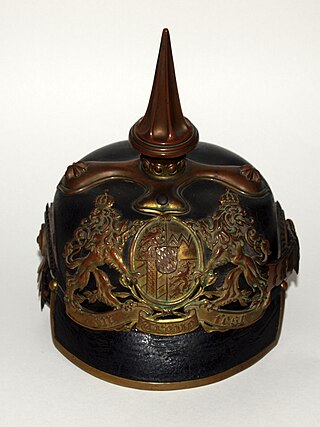
The Pickelhaube, also Pickelhelm, is a spiked leather or metal helmet that was worn in the 19th and 20th centuries by Prussian and German soldiers of all ranks, as well as firefighters and police. Although it is typically associated with the Prussian Army, which adopted it in 1842–43, the helmet was widely imitated by other armies during that period. It is still worn today as part of ceremonial wear in the militaries of certain countries, such as Sweden, Chile, and Colombia.
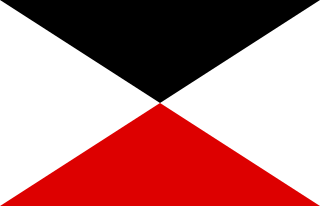
The Guards Corps/GK was a corps level command of the Prussian and then the Imperial German Armies from the 19th century to World War I.
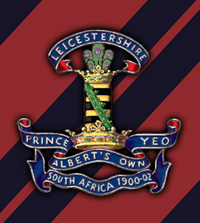
The Leicestershire Yeomanry (Prince Albert's Own) was a yeomanry regiment of the British Army, first raised in 1794 and again in 1803, which provided cavalry and mounted infantry in the Second Boer War and the First World War and provided two field artillery regiments of the Royal Artillery in the Second World War, before being amalgamated with the Derbyshire Yeomanry to form the Leicestershire and Derbyshire (Prince Albert's Own) Yeomanry in 1957. The regiment's lineage is currently perpetuated by E (Leicestershire and Derbyshire Yeomanry) Squadron of the Royal Yeomanry.
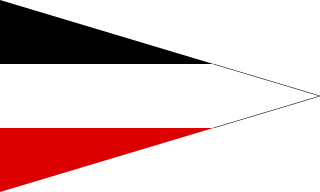
The Guards Cavalry Division (Garde-Kavallerie-Division) was a unit of the Prussian Army that was stationed in Berlin. The division was a part of the Guards Corps (Gardekorps).

The II Army Corps / II AK was a corps level command of the Prussian and then the Imperial German Armies from the 19th Century to World War I.

The XX Army Corps / XX AK was a corps level command of the German Army before and during World War I.

The XVIII Army Corps / XVIII AK was a corps level command of the German Army before and during World War I.

The XIII Army Corps / XIII AK was a corps of the Imperial German Army. It was, effectively, also the army of the Kingdom of Württemberg, which had been integrated in 1871 into the Prussian Army command structure, as had the armies of most German states. The corps was originally established as the Württemberg Corps Command (Korpskommando) in 1817. It became the XIII Army Corps when it was integrated into the Prussian numbering system on December 18, 1871, shortly after the Franco-Prussian War.
This is the German Army order of battle on the outbreak of World War I in August 1914.
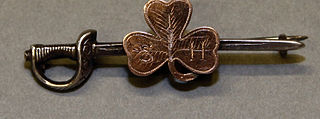
The South Irish Horse was a Special Reserve cavalry regiment of the British Army. Formed as an Imperial Yeomanry regiment in 1902 as the South of Ireland Imperial Yeomanry, it perpetuated a unit formed during the Second Boer War. It transferred to the Special Reserve (Cavalry) in 1908 and was renamed as the South Irish Horse. Having taken part in the fighting of World War I, it was disbanded after Irish Independence in 1922.

The Imperial Russian Army or Russian Imperial Army was the armed land force of the Russian Empire, active from 1721 until the Russian Revolution of 1917. It was organized into a standing army and a state militia. The standing army consisted of regular troops and two forces that served on separate regulations: the Cossack troops and the Muslim troops.
The history of the German Cavalry in World War I is one of an arm in decline.

The Guards Reserve Corps was a corps level command of the German Army in World War I.

The II Royal Bavarian Army Corps / II Bavarian AK was a corps level command of the Royal Bavarian Army, part of the Imperial German Army, before and during World War I.

The XI Army Corps / XI AK was a corps level command of the Prussian and German Armies before and during World War I.

The IX Army Corps / IX AK was a corps level command of the Prussian and German Armies before and during World War I.

The VII Army Corps / VII AK was a corps level command of the Prussian and then the Imperial German Armies from the 19th Century to World War I.

The VI Army Corps / VI AK was a corps level command of the Prussian and then the Imperial German Armies from the 19th Century to World War I.

The V Army Corps / V AK was a corps level command of the Prussian and then the Imperial German Armies from the 19th century to World War I.

The British cavalry were the first British Army units to see action during the First World War. Captain Hornby of the 4th Dragoon Guards is reputed to have been the first British soldier to kill a German soldier, using his sword, and Corporal Edward Thomas of the same regiment is reputed to have fired the first British shot shortly after 06:30 on 22 August 1914, near the Belgian village of Casteau. The following Battle of Mons was the first engagement fought by British soldiers in Western Europe since the Battle of Waterloo, ninety-nine years earlier. In the first year of the war in France, nine cavalry brigades were formed for three British cavalry divisions. Other regiments served in six brigades of the two British Indian Army cavalry divisions that were formed for service on the Western Front. Three regiments also fought in the campaign in Mesopotamia, the only other theatre of the First World War where British cavalry served.
References
- ↑ Cron, Hermann; Rogers, Duncan (2006). Imperial German Army 1914-18: Organisation, Structure, Orders of Battle. Helion & Company Limited. p. 369. ISBN 978-1-874622-29-1.